Here on the edges of the Snake River Plain, spring has quietly snuck up on us. With snow in the air less than a week ago, it seemed like spring might just miss us altogether, but after three fairly nice days in a row, it looks like the weather is turning and we won’t do one of those patented jumps from winter directly to summer, which isn’t unusual around these parts.
And spring here in eastern Idaho is carp season.
In just about any reservoir or slow-water river channel, the carp come calling when the shallows begin to warm. On the Snake River below American Falls Reservoir, it takes a handful of 70-degree days to get the carp on the move. Higher up, in some of the mountain impoundments, the invasive fish have adapted, and they’re moving around about the time the native cutthroats start to migrate into tributaries to spawn, even if the weather is still a bit blustery.
The first carp that move into the shallows, at least here on the Snake, are smaller males—fish anywhere from 3 to 8 pounds. They’re aggressive, hungry and they’ll take small streamers readily. These are the fish that are truly eating, readying themselves for the spawn, when they’ll focus in on the opposite sex and only eat sporadically.
The bigger females won’t move onto the flats in any significant numbers for a few weeks yet, but when they do, they’ll be doing double duty—big hen carp will occasionally eat as they prepare to disperse eggs, and they’ll do that while being pursued by multiple males. Often, the biggest carp of the season are caught just before the spawn begins in earnest.
Once it’s on, though, things slow down. You’ll see plenty of fish, and there are periods of active feeding happening, but, for the most part, these Asian natives are busy mucking up the shallows with eggs and milt. Eating is secondary.
For the next month, though, on rivers and lakes in the Mountain West, where high elevation couples with more northern latitudes, fast-action carp fishing can be found as anglers go after pre-spawn males and early run females. It’s the best time to fish for carp until after the spawn, and by then, a lot of anglers here in the West have moved on to trout, because runoff on high-country streams is fading, and the summer trout season is officially under way.
I’ve been chasing carp on the Snake and other local waters for the better part of 20 years. Here are a few things I’ve learned about early season carp, from proven patterns to proven methods:
Stealth above all
Walking and wading is a lot of fun, but when carp come into the shallows in big numbers, they can be spooked very easily. And carp give off pheromones that warn other carp of danger. When one fish spooks, you’ll notice that other carp spook, too, sometimes seconds or even minutes later as threatened fish swim by them. Even on the flats, consider a pontoon boat—it’ll keep your feet out of the water and, for some reason, presents less of a threat to fish in shallow water. If you must wade, pretend you’re chasing permit—carp can be just as challenging. Be slow. Be deliberate. Keep your eyes open.
Get salty
Hone your saltwater skills. You’ll need your fish-eye and your bonefish cast. Wear good polarized sunglasses and watch for the patented “nervous water” your favorite flats guide always talks about.
Match the hatch
Early in the season, choose flies that match early season hatches. Where I fish in the spring, carp are keying in on damselfly nymphs that are preparing to emerge near cattails. Later in the spring, they’ll focus on crawfish and leeches. Walk the banks. See what’s washing up. Carp are notoriously flexible when it comes to their diets, and they’ll eat damn near anything, from cottonwood seeds and berries, to crustaceans and amphibians.
Don't get egged
Jumping carp aren’t necessarily eating carp … but that doesn’t mean they’re not eating, too. I’ve watched massive 30-pound carp try and leap from the water, only to fail to get completely out of the water, simply because getting all the girth out of the water isn’t possible. I think these fish are breaching to loosen up egg sacks and to attract other fish to the spawn. Carp are broadcast spawners, so they don’t pair up to spawn. One female’s eggs might be fertilized by the milt of several males—you’ll often see three or four smaller males following a larger female across the flats, occasionally bumping her or brushing up against her, trying to encourage her to let loose with a squirt of eggs. And you don’t want to be there when she blasts out a bunch of eggs with males around to complete the orgy. The eggs are tacky, gelatinous sacks that will stick to you and require some real effort to remove. In other words, have a stick handy to scrape them off your waders or your bare shins (another reason to consider a boat!).
Strip slowly
Early in the year, I like to strip flies slowly. The water is still pretty cold, and early run carp, while they’re hungry, haven’t fully switched over from their winter-time dormancy to their springtime hyperphagic stage. They’re somewhere in the middle. As the water warms, I strip streamers and nymphs a little faster as the fish become more active.
Look for tails
Tailing carp are money. I rarely see tailing carp here on my local waters early in the year. This seems to happen after the spawn when big females are exhausted, spawned out and ready to eat. Where I fish, this usually happens in early to mid-June, but depending on weather and the timing of the spawn where you live, it can happen much sooner. When you see tailing carp, you’re seeing carp that are actively feeding—noses in the mud, tails waving in the breeze, just like redfish or even bonefish. And, just like reds or bones, you need a fairly delicate presentation and you can’t put a fly right on their noses, or they’ll spook and take the entire pod of fish with them into deeper water. Where I fish, tailing carp are usually after crawfish that are digging into the mud to get away from the predators, so your favorite smallmouth bass crawfish pattern should work. I have also had good luck using brown or rusty-brown ‘buggers.
Watch first
When I hit the river in pursuit of carp, I always spend a few minutes watching, even before I gear up. It helps me determine if there are any movement patterns I can detect, the wind direction and if there are pods of fish actively mudding—this is a good sign, which often indicates feeding fish in slightly deeper water where they won’t be as spooky.
For early season carp, I’ll fish a 6- or 7-weight rod, depending on the wind and the size of fly I’m using, with a floating line. When the big females come in, I’ll switch almost exclusively to the 7-weight set-up, and I’ll absolutely check my backing knot. A 30-pound female that wants to get back to deeper water after she’s been hooked will take you to your backing in mere seconds.
Chasing carp this time of year can put you on to the biggest fish you’ll catch all season, but there are lots of moving parts involved in fly fishing for carp. Your gear needs to be ready, and you’ll need your best saltwater approach. In fact, I met a guy down on the Yucatan in early March, and, after we got to talking a bit, he said he always fished bonefish in March to get ready for spring carp season back home in Michigan.
That pretty much says it all, right?




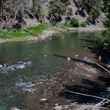
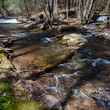
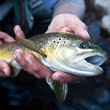
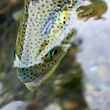
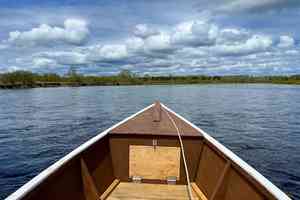
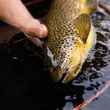



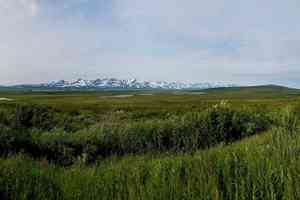
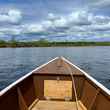




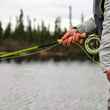

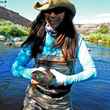
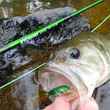
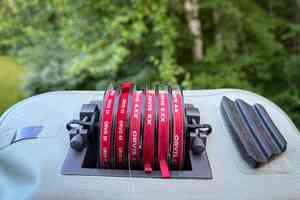
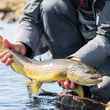
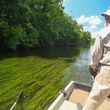
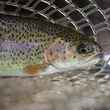
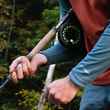
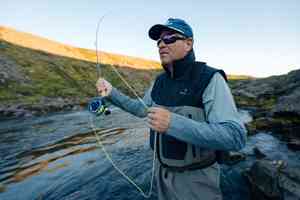
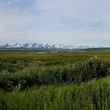
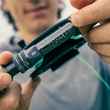

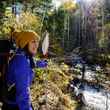
Comments